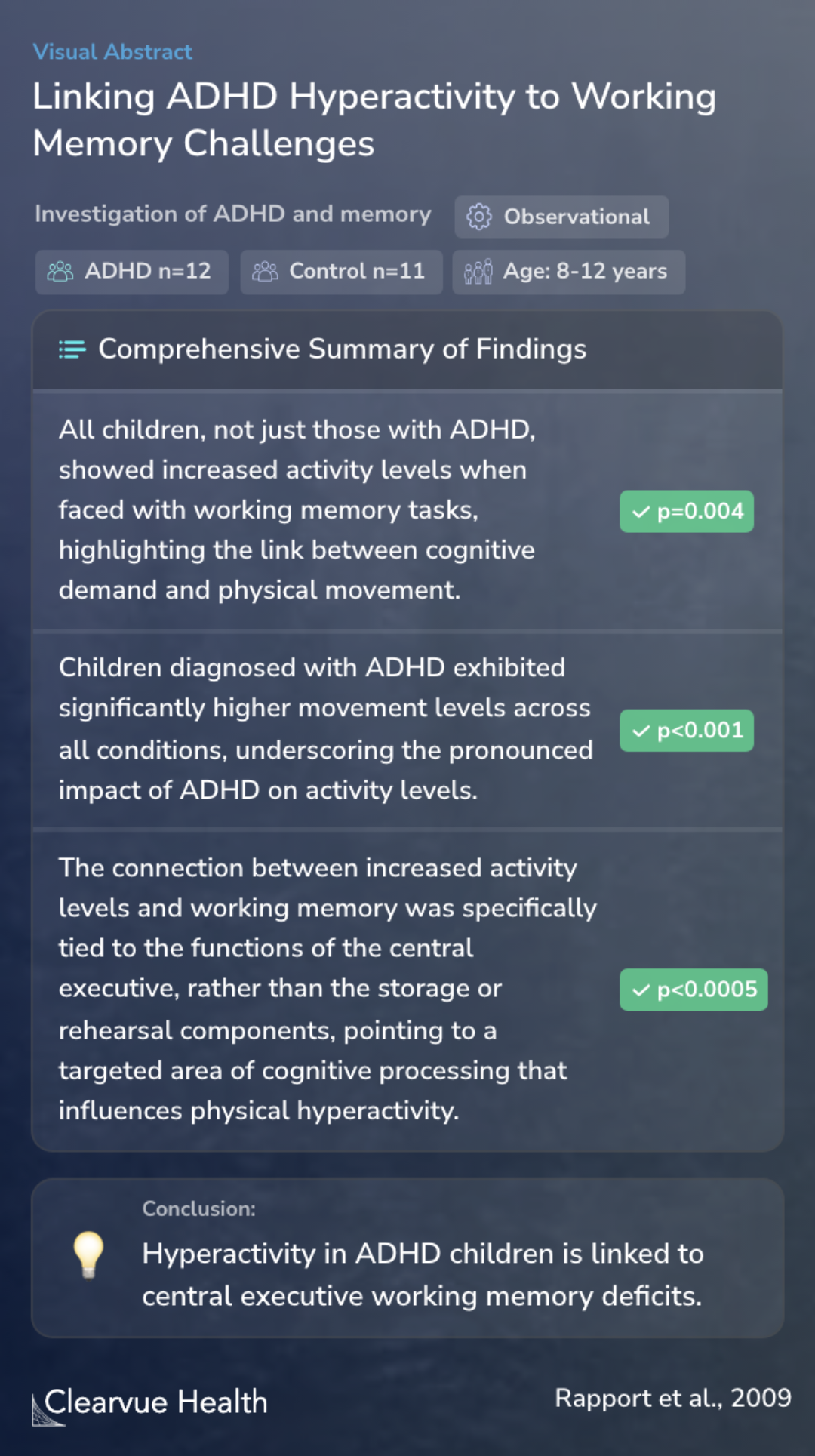Hyperactivity in boys with attention-deficit/hyperactivity disorder (ADHD): a ubiquitous core symptom or manifestation of working memory deficits?
Linking ADHD Hyperactivity to Working Memory Challenges
Rapport MD, Bolden J, Kofler MJ, Sarver DE, Raiker JS, Alderson RM

Objectives
The paper explores a different way of understanding hyperactivity in kids with ADHD. It looks at how their need to move might be connected to how their brains work, especially with tasks that need memory and attention.
Hyperactivity is currently considered a core and ubiquitous feature of attention-deficit/hyperactivity disorder (ADHD); however, an alternative model challenges this premise and hypothesizes a functional relationship between working memory (WM) and activity level.
Methods
In this study, researchers watched how active kids were while they did different memory tasks. They used special tools to measure movement very accurately. This was done with a group of boys aged 8 to 12, some with ADHD and some without, to see if there were any differences.
The current study investigated whether children's activity level is functionally related to WM demands associated with the domain-general central executive and subsidiary storage/rehearsal components using tasks based on Baddeley's (Working memory, thought, and action. New York: Oxford U...
Results
The study found that all kids, not just those with ADHD, moved more when doing memory tasks. This suggests that the harder the brain works, the more a child might move. However, kids with ADHD moved a lot more in every situation, which points out how ADHD makes kids even more active. The study also discovered that this extra movement was mainly related to a part of the brain that helps with managing thoughts and not so much to the part that stores information.
All children exhibited significantly higher activity rates under all WM relative to control conditions, and children with ADHD (n = 12) moved significantly more than typically developing children (n = 11) under all conditions. Activity level in all children was associated with central ex...
Conclusions
The findings suggest that the reason kids with ADHD are so active might have a lot to do with the part of their brain that helps them organize and manage their thoughts. This challenges the usual idea that hyperactivity is just a constant feature of ADHD, suggesting it might be more about how these kids' brains work, especially when they're trying to remember or think about something.
These findings support the hypothesis that hyperactivity in ADHD is functionally related to central executive WM deficits and challenges the prevailing view of hyperactivity as a ubiquitous and core feature of ADHD. This has implications for understanding the basic neurocognitive process...
Key Takeaways
Context
Another study by Alderson and colleagues in 2012 also looked into hyperactivity in kids with ADHD. They found that these kids moved more not just because they couldn't stop themselves, but because of how they pay attention to things. This adds to the idea that hyperactivity in ADHD might be more about how these kids focus and less about just being unable to sit still.
In a similar vein, Teicher et al. in 1996 studied how kids with ADHD move when they're sitting and doing a task. They found that kids with ADHD not only moved their heads more but also had simpler patterns of movement compared to other kids. This research helps us see how ADHD affects kids, making them more likely to fidget and move around.